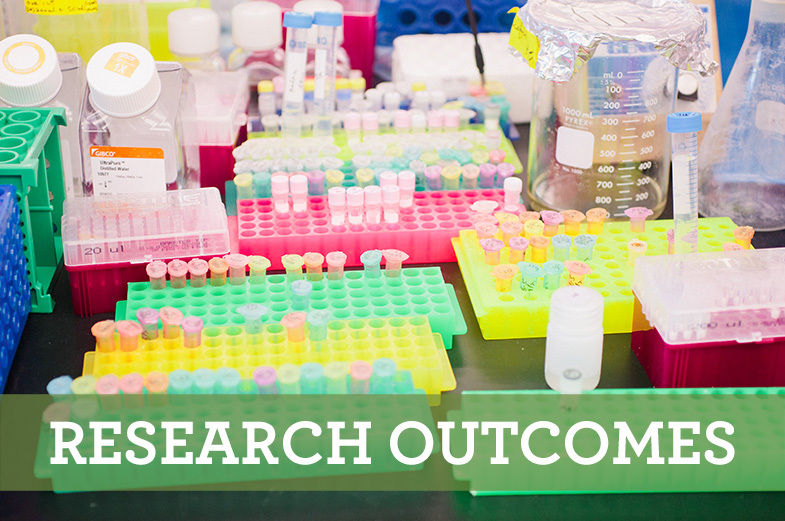Our St. Baldrick’s Foundation Research Outcomes blogs highlight examples of the progress your donations are supporting. This quarterly edition focuses on a new treatment target for neuroblastoma, improving CAR T-Cell effectiveness, using ultrasound to reach brain tumors, and preventing heart failure in childhood cancer survivors.
Thank you for making this research possible.

Unlocking CAR T-Cell Potential with FOXO1
CAR T-cell therapy has had a major impact in treating some pediatric blood cancers. However, one big hurdle in CAR T-cell immunotherapy is the short-lived effectiveness of the treatment. Researchers with the St. Baldrick’s Foundation EPICC Team have recently found a potential game-changer for CAR T-cell therapy. They discovered that a protein called FOXO1 could boost CAR T-cell’s staying power in the body. FOXO1 promotes memory and prevents exhaustion in CAR T-cells. By adjusting FOXO1 levels, scientists were able to enhance CAR T-cell’s memory and keep them fighting against tumors for longer periods. This research provides hope for making immunotherapy more effective for kids fighting cancer.
Hope for Childhood Brain Tumors: Combining Ultrasound and Radiotherapy
Diffuse midline glioma, a devastating brain tumor in kids, doesn’t have many treatment options. Surgery isn’t usually an option because of where the tumor is, and chemotherapy hasn’t improved outcomes. The main treatment is radiotherapy. The big problem with getting other treatments to work is the blood-brain barrier, which protects the brain but also stops drugs from reaching the tumor.
Recent studies suggest that focused ultrasound might help by opening up the blood-brain barrier and letting drugs through. But before doctors can translate this into the clinic, they need to make sure it’s safe and doable alongside radiotherapy, which is the standard treatment.
A recent study, partly funded by St. Baldrick’s, found that combining focused ultrasound with radiation therapy in models is safe, feasible and may improve drug delivery to the brainstem, potentially offering new hope for patients. Dr. Cheng-Chia Wu, the corresponding author of the article, is a St. Baldrick’s Scholar. His award was supported by St. Baldrick’s Hero Fund, Hannah’s Heroes, and The Focused Ultrasound Foundation.
New Hope for a Neuroblastoma Treatment Target
Researchers discovered a new biomarker for neuroblastoma, a childhood cancer that develops in early nerve tissues usually around the adrenal glands. This finding could be a game-changer for treatment. The marker, AF1q, is known to play a role in leukemia and solid tumor growth and was suspected to be important in neural tumors, too. These researchers used databases and the “Depmap” Cancer Dependency Map which was supported in part by the St. Baldrick’s Foundation — to analyze the biomarker. They found AF1q was expressed at the highest level in neuroblastoma compared to all other tumor types. This means neuroblastoma cells are reliant on AF1q to grow. They were excited to see that when turning off AF1q in models appeared to initiate cell death. Future studies will focus on determining how AF1q interacts with other cellular proteins and then using that information to target AF1q’s actions in cancer cells.
The Challenges of Protecting Kids Hearts After Cancer Treatment
Anthracyclines are widely used in the treatment of childhood cancer, and these drugs have improved survivorship. However, one of the most recognized late effects of this therapy is heart failure. Childhood cancer survivors who develop heart failure have a poor long-term prognosis.
Looking to reduce the risk of heart failure, researchers tested a drug called carvedilol in childhood cancer survivors. Supported in part by St. Baldrick’s Foundation, this was one of the largest trials for preventing heart failure in childhood cancer survivors. Carvedilol is known to help the heart function in other conditions. The study found that while low-dose carvedilol was safe, it didn’t significantly improve heart function compared to a placebo. However, it did show more promise in survivors who had been cancer-free for a longer time.
Researchers noted that carvedilol could still be part of future prevention plans, possibly combined with other treatments, for those at high risk of heart failure due to cancer treatment. This could lead to better strategies for managing heart health in cancer survivors.
Not every publication of research supported by St. Baldrick’s makes the news, but each one adds to the body of scientific knowledge that takes us one step closer to better outcomes for kids with cancer. Your continued support will make more research possible to Conquer Kids’ Cancer.
Donate now and help support research into better treatments for kids with cancer.
Read more on the St. Baldrick’s blog:

 SBF
Tweets »
SBF
Tweets »